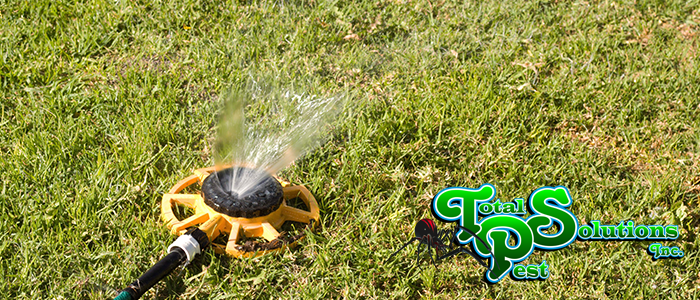
Preparing Lawns for Fall in Davenport: August Irrigation Adjustments
As August progresses in Davenport, Florida, lawn care requires a shift in strategy. The intense summer heat begins to subside, hinting at the approaching fall. While many homeowners continue to water their lawns as they did in the drier months, August presents a unique opportunity to adjust irrigation practices to promote healthier grass and conserve water. Properly managing your lawn’s water intake now will set the stage for a lush, resilient turf throughout the cooler months. This article will guide you through the essential irrigation adjustments you can make in August to prepare your lawn for the fall season.
Understanding Your Lawn’s Water Needs in August
August in Central Florida is a transitional month. Rainfall patterns can be unpredictable, with occasional heavy showers interspersed with periods of sunshine and moderate temperatures. As such, understanding your lawn’s specific water requirements becomes crucial. Overwatering can lead to fungal diseases and shallow root systems, while underwatering can stress the grass, making it vulnerable to pests and drought. Monitor the local weather forecast and rainfall amounts. Supplement natural rainfall only when necessary, aiming for about ¾ inch of water per week, including rainfall. The University of Florida IFAS Extension provides detailed insights into lawn watering guidelines tailored to Florida’s climate. (University of Florida IFAS Extension)
Consider the type of grass you have. St. Augustine grass, a common variety in Davenport, typically requires more water than Bahia grass. Observe your lawn for signs of stress, such as wilting or discoloration, which may indicate that it needs more water. Perform a simple “screwdriver test” to gauge soil moisture. If you can easily push a screwdriver six inches into the ground, the soil is adequately moist. If it’s difficult, your lawn likely needs watering.
Adjusting Your Irrigation Schedule in Lakeland
In Lakeland, adjusting your irrigation schedule doesn’t just benefit your lawn; it also aligns with local water conservation efforts. Many municipalities have specific watering restrictions in place, and adhering to these guidelines helps preserve valuable water resources. Check the Southwest Florida Water Management District website for the latest watering restrictions and regulations in Lakeland. (Southwest Florida Water Management District) Furthermore, consider incorporating these adjustments:
- Water deeply and infrequently: Instead of short, daily watering sessions, water your lawn deeply but less often. This encourages deeper root growth, making the grass more drought-tolerant.
- Water early in the morning: Watering in the early morning hours (before 10 a.m.) minimizes water loss due to evaporation. It also allows the grass blades to dry before nightfall, reducing the risk of fungal diseases.
- Use a rain sensor: Install a rain sensor that automatically shuts off your irrigation system when it rains. This prevents overwatering and ensures that your lawn only receives supplemental water when it’s truly needed.
The Benefits of Smart Irrigation Technology
Investing in smart irrigation technology can further optimize your watering practices. Smart controllers use real-time weather data and soil moisture sensors to automatically adjust your irrigation schedule based on the specific needs of your lawn. These systems can save water and promote healthier turf. Look for WaterSense-labeled controllers, which have been certified by the EPA to meet certain water efficiency standards. Smart irrigation can be expensive; however, this offers a significant long term saving on water.
Addressing Common Lawn Problems in August
August’s warm, humid conditions can create an environment conducive to lawn diseases like brown patch and gray leaf spot. Proper irrigation practices can help prevent these problems. Avoid overwatering, which creates overly moist conditions that favor fungal growth. Ensure good air circulation by removing thatch buildup and trimming overgrown shrubs and trees. If you notice signs of disease, such as brown or gray patches on the grass blades, consider applying a fungicide according to the manufacturer’s instructions. Always follow the label direction when you use fertilizer or pesticide.
Fertilizing Your Lawn in Preparation for Fall
While August is a good time to adjust irrigation, it’s usually not the best time for heavy fertilization. Avoid applying high-nitrogen fertilizers during this period, as they can promote excessive top growth, making the lawn more susceptible to disease and stress. Instead, consider applying a slow-release, low-nitrogen fertilizer with added potassium. Potassium helps strengthen the grass and improve its cold tolerance, preparing it for the cooler months ahead. Slow release fertilizer provides essential nutrients over a longer period of time.
Professional Lawn Care Assistance
Maintaining a healthy lawn in Davenport and Lakeland requires ongoing attention and expertise. If you’re unsure about the best irrigation practices for your lawn or if you’re struggling with persistent lawn problems, consider seeking professional assistance from Total Pest Solutions. Their experienced technicians can assess your lawn’s specific needs and develop a customized care plan to keep it healthy and thriving year-round. Proper landscaping is extremely imperative to home value and curb appeal.
Conclusion
Making thoughtful August Irrigation adjustments is crucial for preparing your lawn for the fall season in Davenport and Lakeland. By understanding your lawn’s water needs, adjusting your irrigation schedule, and addressing common lawn problems, you can promote healthier grass and conserve water. Remember to monitor the weather forecast, follow local watering restrictions, and consider investing in smart irrigation technology for optimal results. For comprehensive lawn care services and expert advice, contact Total Pest Solutions today.
continue reading
Related Posts
How Professional Irrigation Services Can Keep Your Lawn Lush and





